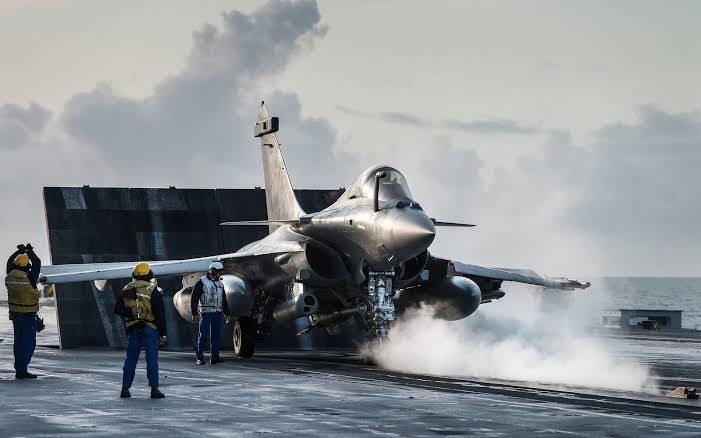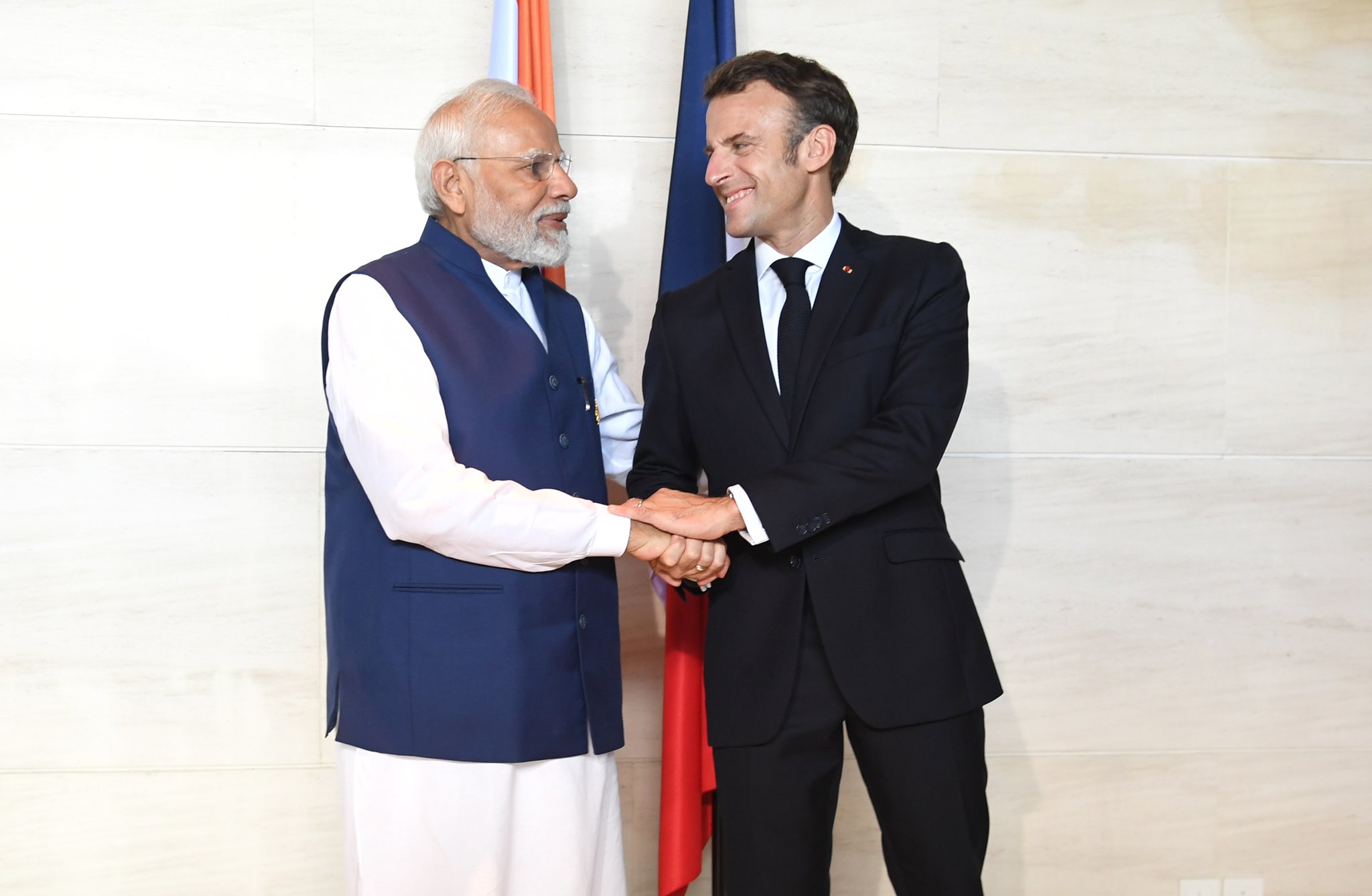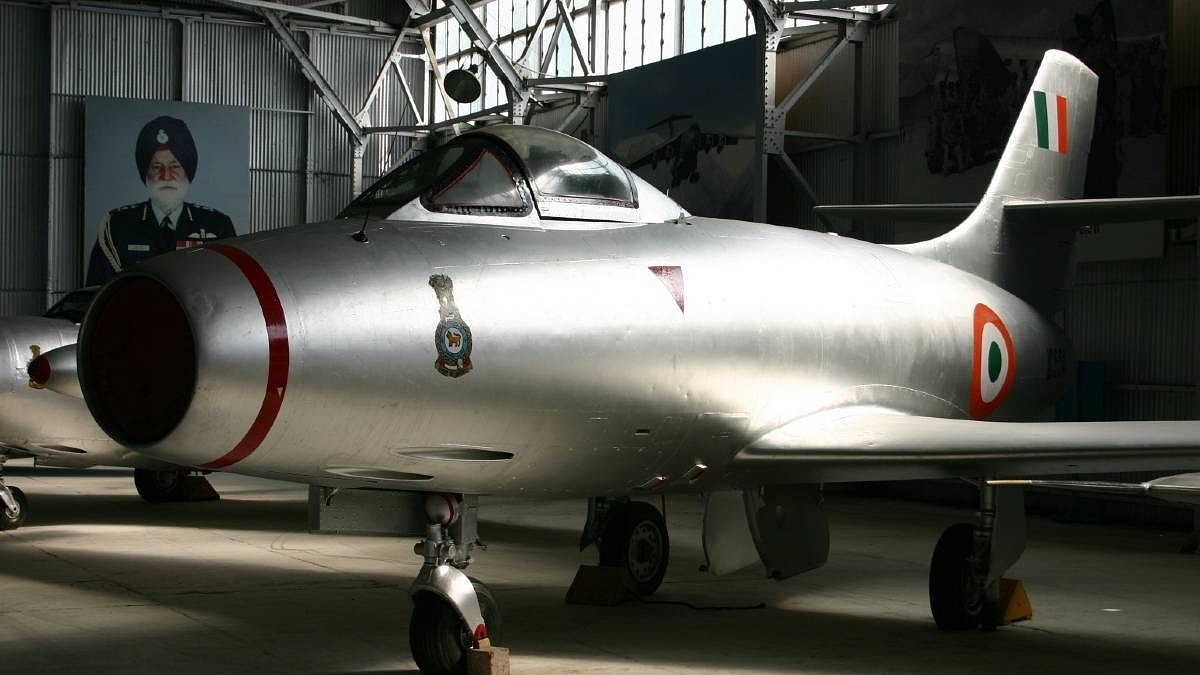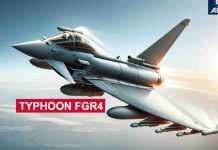The forthcoming visit of Indian Prime Minister Narendra Modi to France (July 13-14) will, in all probability, be marked by the agreement to procure via the government-to-government (G2G) route 26 Rafale Marine (M) for the indigenously made carrier INS Vikrant.
MUST READ: French Tanks ‘Bite The Dust’ In Ukraine War; Top Commander Says US, British MBTs Better Suited To Fight Russia
It is now an open secret, which the EurAsian Times had reported earlier that the Indian Navy had preferred Rafale (M) to the US Boeing’s F/A 18 Super Hornet fighter.
But the visit could also be marked by France manifesting its intense competition with the United States in securing a strong foothold in India’s defense sector in another area.
Indian government sources have revealed how French President Emmanuel Macron has given the green signal to the defense major Safran to jointly design, develop, test, manufacture, and finally certify an engine that will power India’s twin-engine advanced multirole combat aircraft (AMCA) and the twin-engine deck-based fighter for Indian aircraft carriers.
If Modi’s visit to the United States last month saw the conclusion of what was said to be a historic deal for the co-manufacture of General Electric GE F-414 jet engines in India with eighty percent transfer of technology (ToT) for the Tejas-2 fighter aircraft apart from the decision to buy 31 MQ-9B long endurance drones), France is said to be offering a 100 percent transfer of technology for the co-development of a new 110kN high-thrust jet engine to power the AMCA fifth-generation stealth jet.
And, unlike the still absent clarity of how effectively the Indo-US co-production plans the F-414 engine and what kind of know-how Indian engineers and technologists will be able to acquire and indigenize under the US International Trade in Arms Regulation (ITAR), the French offer is very comprehensive, detailing “a completely new engine, new materials, new architecture, stealth compliance with full supply chains and ancillary manufacturing based in India.”
Besides, Safran, which is building a maintenance, repair, and overhaul (MRO) facility for its LEAP engines in Hyderabad used in the A320 and Boeing 737 aircraft and the M-88 engine that powers the Rafale fighter, is also prepared to set up a center of excellence in gas turbine technology in India with full design and metallurgical precision software tools.
Incidentally, the Indian Ministry of Defense’s (MoD) Defense and Research Development Organization (DRDO) chief, Dr. Samir V Kamat, had paid a special visit to the Safran engine factory and the R&D center near Paris on the sidelines of the recently concluded 2023 Paris Air Show.
However, as EurAsian Times had reported earlier, American General Electric and British Rolls Royce (RR) are also competing for the AMCA project.
Rolls Royce has offered to develop an engine for AMCA on multiple occasions. It had reportedly provided a Eurojet EJ200 version with a thrust of 110-120KN. It may be noted that Rolls Royce is currently participating in the British-Japan sixth-generation fighter program. The British offer is that the engine co-produced in India could also be exported.
But, a Times Now report quotes sources making it clear that France, unlike other competitors, has reassured that it will put “no restrictions on stopping any access to sensitive issues” in co-producing this engine.

And France has a history on its side as a reliable defense supplier to India. France’s steadfastness as a military partner contrasts strongly with that of the United States, which does not have a good record of being a reliable supplier of military items and technologies to India and its traditional allies during crises.
In India’s case, the US, in the past, had vetoed or slowed components for LCA Tejas. It had otherwise imposed an arms embargo on India following its nuclear tests in 1998.
France – A Trusted Partner
Of all the security partnerships that India has now with other countries, the one with France has been the most enduring.
In 1998, France was the first country with which India established a strategic partnership, which has since been accorded to more than 30 countries. This special relationship has always centered around three crucial areas: Nuclear, Space, and Defense.
Following India’s peaceful nuclear explosion tests in 1974, the United States and Canada terminated their nuclear engagements with India, but France supplied India with fuel for the Tarapur nuclear plant.
Similarly, France proved the exception when the United States and others imposed sanctions on India after the nuclear tests in May 1998. In fact, the then French president Jacques Chirac publicly supported New Delhi and opposed US sanctions.
Soon after the India-specific waiver was granted by the Nuclear Suppliers Group (NSG) in September 2008 to engage in civil nuclear trade, France was the first country to sign a civil nuclear agreement with India, even before the US Senate had approved the India-US nuclear agreement.

When the NSG later declared that it would not supply enrichment and reprocessing technology to countries that were non-signatories to the Non-Proliferation Treaty, France declared that its bilateral nuclear cooperation with India would not be affected.
Although the US played the most important role in granting India the NSG waiver, the French companies outdid their American counterparts when entering India’s nuclear market.
France has also offered to construct six EPR (nuclear reactors) of 1,600 MW each in India. Those things have not moved forward as they should have been, something that concerns India’s domestic politics. But that is a different matter.
India-French cooperation in space technology has not been publicized as it should have been. It began nearly 60 years ago when France provided India with the technology to produce the Centaure-sounding rockets domestically.
The first Indian Satellite Telecommunication Experimental Project (STEP) was undertaken during the 1970s using the French satellite Symphonie; it was followed by Ariane launching the Ariane Passenger Payload Experiment (APPLE).
Arianespace was the preferred agency for launching large Indian satellites, particularly the INSAT and GSAT series. And now that India has developed its independent launch capabilities, French organizations like EADS Astrium and Indian commercial arm Antrix have found it mutually beneficial to work to market Polar Satellite Launch Vehicle capabilities together in the West.
Though defense cooperation between the two countries goes back to the 1950s and 60s — in the 50s, France had provided 104 Ouragan aircraft to the Indian Air Force, rechristened “Toofani” by India — the decision to embark on a strategic partnership in 1998 led to the establishment of a High Committee on Defense Cooperation.

This forum promotes political dialogue and high-level military consultations between officials, cooperation between armed forces through exchanges and joint exercises, and long-term partnerships between Indian and French entities in the field of the armaments industry.
France was the first country with which India conducted a joint naval exercise called ‘Varun’ after the 1998 nuclear tests. The two countries have continued to hold this exercise over the years. Similarly, the IAF’s first bilateral exercise in 2003 with a foreign counterpart, ‘Garuda I,’ was again with the French Air Force.
There is what is called the middle powers congruence between New Delhi and Paris, as both India and France have valued their respective “strategic autonomy.”
France has never been a blind supporter of the United States, even though it is a member of the US-led NATO. The same is the case with India. Despite its vastly improved ties with the United States now, it is unfathomable that India will ever give up its strategic autonomy.
Of course, it could be argued, something that this author had once pointed out, that France is using India to give a second life to its own last-generation technologies. The Rafale jet fighters that France has sold to India were developed in the 1980s and 1990s, and although they are still used as front-line aircraft by the French Air Force, they no longer represent the technological cutting edge.
By promising to transfer not only production but also know-how to India, France can be said to be trying to establish a new manufacturing base for its products that would otherwise become obsolete.
But then the fact remains that these technologies will remain relevant for quite some time for most of the world. And in developing or co-producing them, India will gain valuable experience developing and designing its own technologies sooner rather than later.
After all, let us not forget that China, which now claims to be self-reliant in producing its fighter jets, first used the Russian–made AL31F engine in its fifth-generation J-20 fighter. Subsequently, it replaced that with WS-10 Taihang, which is still a generation behind modern Western jet-engine technology.
- Author and veteran journalist Prakash Nanda is Chairman of the Editorial Board – EurAsian Times and has been commenting on politics, foreign policy, on strategic affairs for nearly three decades. A former National Fellow of the Indian Council for Historical Research and recipient of the Seoul Peace Prize Scholarship, he is also a Distinguished Fellow at the Institute of Peace and Conflict Studies.
- CONTACT: prakash.nanda (at) hotmail.com
- Follow EurAsian Times on Google News




